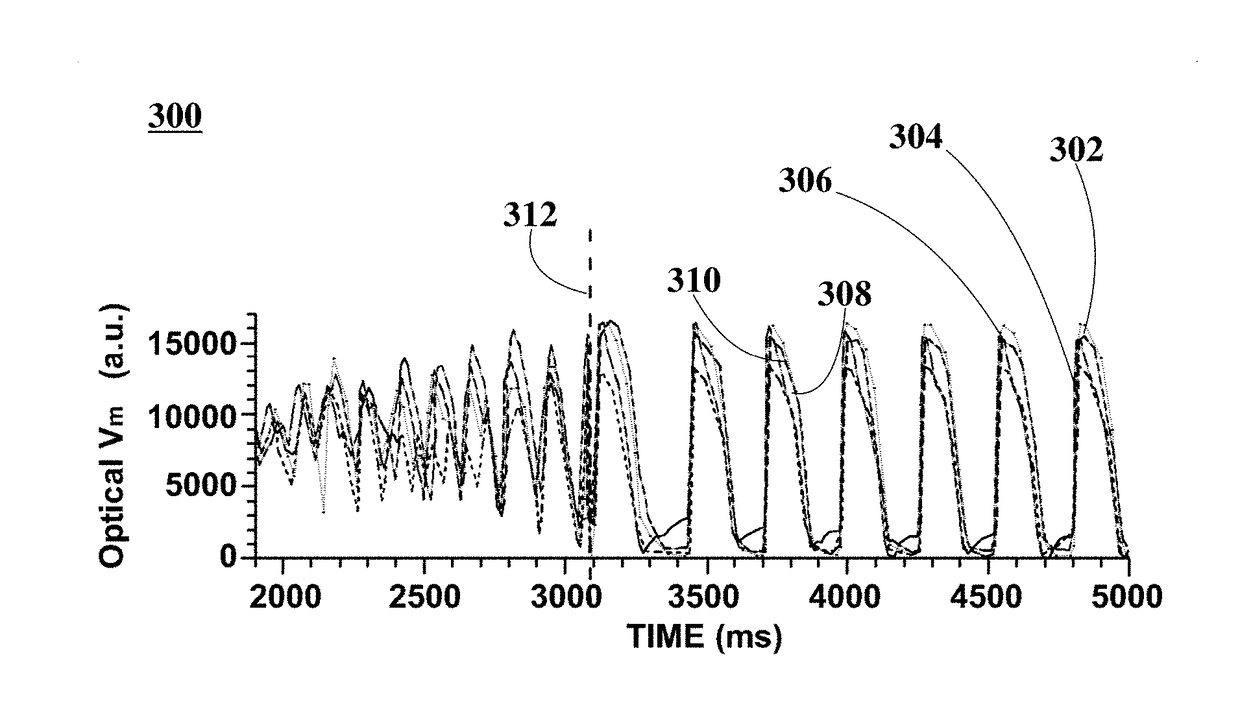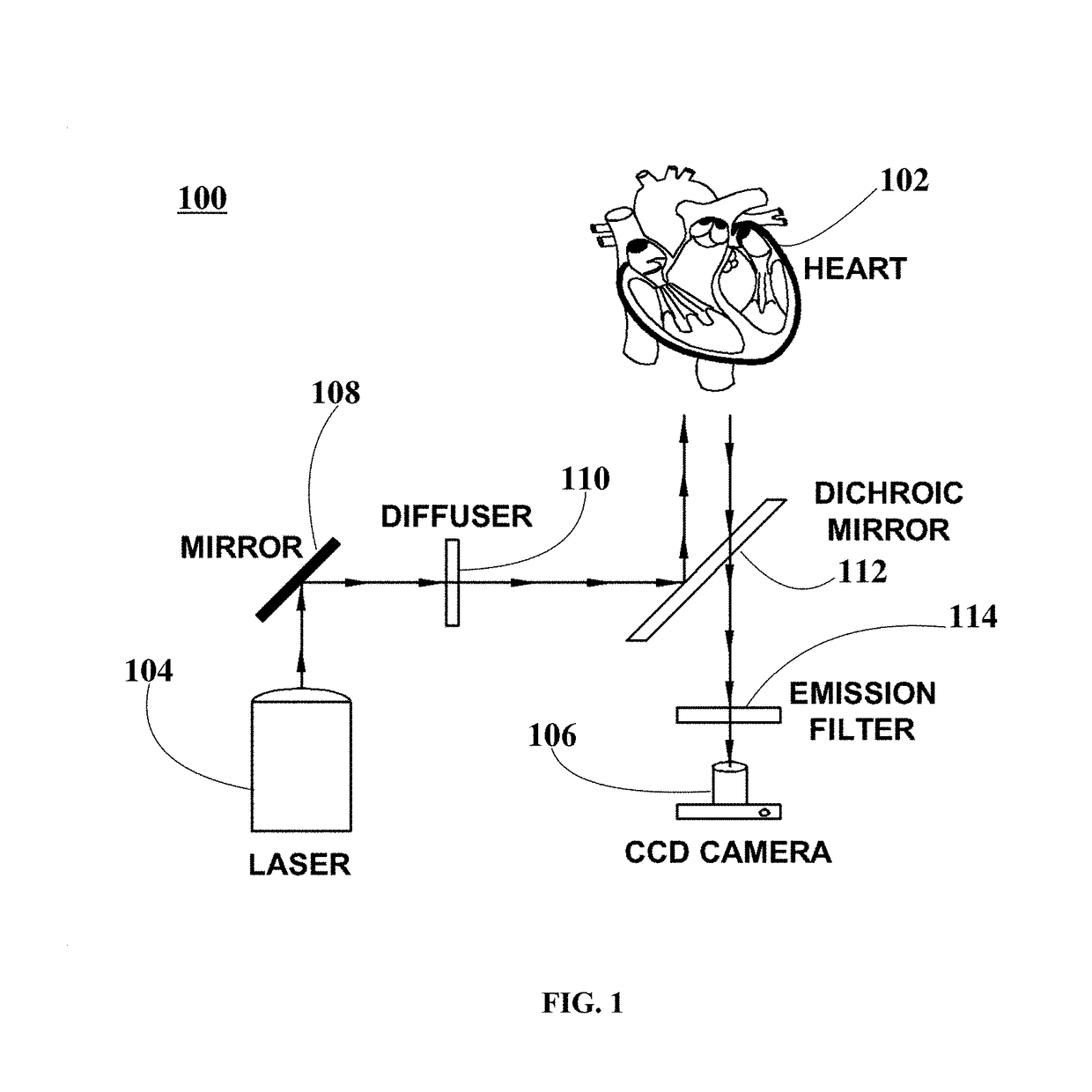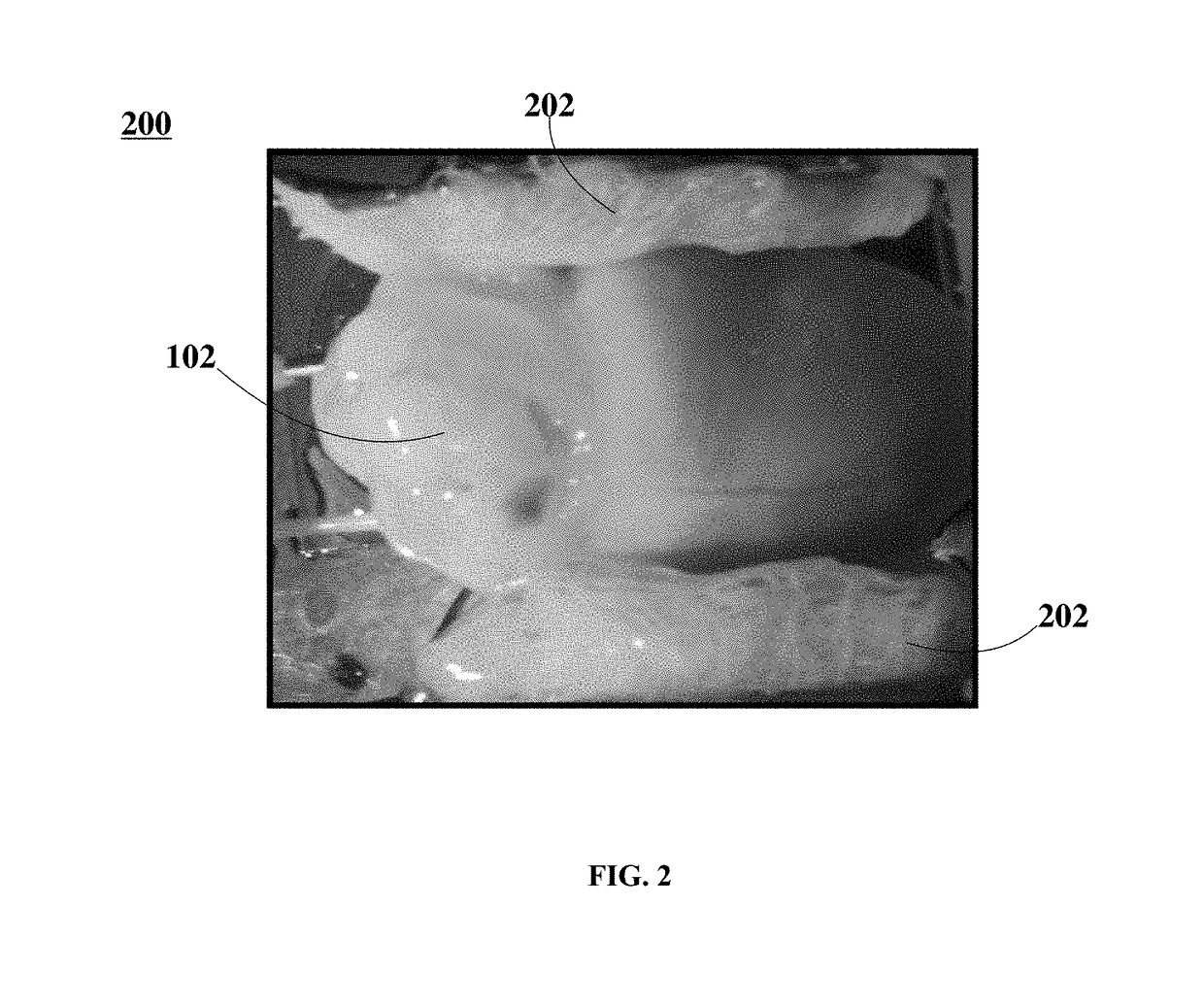Low-energy defibrillation with nanosecond pulsed electric fields
a nanosecond pulsed electric field and low-energy technology, applied in the field of defibrillation, can solve the problems of reducing survival chances, nspefs not allowing pore expansion, and the first shock of the automated external defibrillator does not always terminate the vf or restore the organized rhythm, so as to reduce the risk of inhomogeneity, uniform tissue activation, and uniform tissue activation
- Summary
- Abstract
- Description
- Claims
- Application Information
AI Technical Summary
Benefits of technology
Problems solved by technology
Method used
Image
Examples
example 1
[0061]Three (3) New Zealand white rabbits were handled and euthanized according to the approved animal protocol. The three rabbits were heparinized (500 IU / kg) and brought to a surgical plane of anesthesia with 2.5-4% isoflurane. The hearts were surgically removed, the aorta immediately cannulated, and the hearts flushed with and immersed in cold cardioplegic solution (in mM: glucose 280, KCl 13.4, NaHCO3 12.6, mannitol 34). The hearts were placed within optical mapping system 100 and retrogradely perfused with Tyrode solution (in mM: NaCl: 130, KCl: 4.0, CaCl2: 1.8, MgCl2: 1.0, NaHCO3: 24, NaH2PO4: 1.2, glucose: 5.6) bubbled with 95% O2 / 5% CO2, at a pressure of 60-80 mmHg, with pH kept between 7.35 and 7.45 and temperature of about 37.5±0.5° C.
[0062]In an example, Langendorff-perfused heart 102 is injected with 5 mL bolus of the voltage-sensitive fluorescent probe Di-4-ANBDQBS (about 10 μM). In this example, an electromechanical uncoupler blebbistatin inhibitor (about 10 μmol / L) is...
example 2
[0071]Twelve (12) New Zealand white rabbits of either sex (3-4 kg) were handled and euthanized according to the approved animal protocol. The twelve rabbits were heparinized (500 IU / kg) and brought to a surgical plane of anesthesia with 2.5-4% isoflurane. The hearts were rapidly removed, the aorta cannulated and flushed with ice cold Tyrode solution (in mM: NaCl: 128.2, NaCO3: 20, NaH2PO4: 1.2, MgCl2: 1.1, KCl: 4.7, CaCl2: 1.3, glucose: 11.1). The hearts were placed within optical mapping system 100, where they were perfused and superfused with warm oxygenated Tyrode solution (37±0.5° C.) at a constant pressure of 60-80 mmHg. After 30 min equilibration, 10-15 mM of 2, 3-butanedione monoxime was added to eliminate contractions.
[0072]FIG. 5 is a photographic representation depicting a Langendorff-perfused rabbit heart in an optical mapping system, according to an embodiment. In FIG. 5, optical mapping system 500 includes Langendorff-perfused heart 102, electrodes 504, and inset image ...
PUM
 Login to View More
Login to View More Abstract
Description
Claims
Application Information
 Login to View More
Login to View More - R&D
- Intellectual Property
- Life Sciences
- Materials
- Tech Scout
- Unparalleled Data Quality
- Higher Quality Content
- 60% Fewer Hallucinations
Browse by: Latest US Patents, China's latest patents, Technical Efficacy Thesaurus, Application Domain, Technology Topic, Popular Technical Reports.
© 2025 PatSnap. All rights reserved.Legal|Privacy policy|Modern Slavery Act Transparency Statement|Sitemap|About US| Contact US: help@patsnap.com



